The List of Luis Miguel Albums in Order of Release
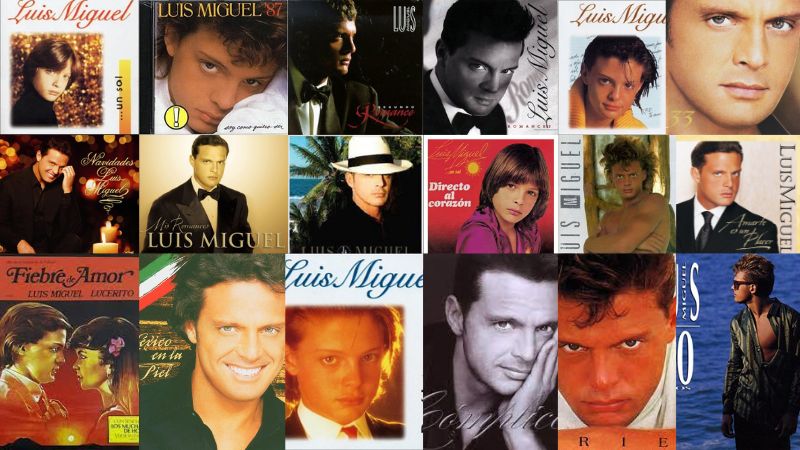
Luis Miguel Albums in Order: Embarking on a journey through the illustrious career of the iconic Mexican singer and record producer, Luis Miguel Gallego Basteri, reveals a musical odyssey that transcends borders and generations.
Luis Miguel Gallego Basteri, born on April 19, 1970, is a prominent Mexican singer and record producer of Spanish and Italian descent, earning him the affectionate nickname “El Sol de Mexico” (The Sun of Mexico) from his mother, who used to call him “Mi sol” (My sun) during his childhood. With a versatile vocal range and a penchant for various musical genres, Luis Miguel has left an indelible mark on the Latin music scene. His repertoire spans pop songs, ballads, boleros, tangos, jazz, big band, and mariachi, showcasing his musical prowess.
Remarkably, while many Latin artists embraced the “Latin Explosion” to conquer the Anglo market in the 1990s, Luis Miguel steadfastly recorded exclusively in Spanish, yet emerged as the best-selling Latin artist of that era, credited with popularizing the bolero genre to the mainstream audience. His global impact is undeniable, having sold approximately 60 million records worldwide, solidifying his status as one of the top-selling Latin music artists in history. Luis Miguel’s journey began in 1981, captivating audiences with his music and showmanship, and at the tender age of 14, he became the youngest male artist to win a Grammy for his duet “Me Gustas Tal Como Eres” with Sheena Easton.
His trailblazing career includes the 1991 RIAA recognition of his album “Romance” as one of the best-selling Latin albums ever. He holds numerous records, including the most top-10 hits on Billboard’s Hot Latin Songs chart and the distinction of being the first Latino artist to earn double-platinum certifications for Spanish-language albums in the United States. Not only has he conquered the charts, but Luis Miguel is also celebrated for his mesmerizing live performances, breaking records and setting milestones with his high-grossing tours, cementing his legacy as an iconic figure in the world of Latin pop music.
As of October 2020, Luis Miguel stands tall as the second-greatest Latin artist of all time on Billboard’s prestigious chart. So, if you are a die heart fan of Luis Miguel Albums then check out here we have list of Luis Miguel albums in order of release so far.
All Luis Miguel Albums Available on: Apple Music
How many albums does Luis Miguel have?
The discography of Mexican recording artist Luis Miguel has released 21 studio albums, 30 compilation albums, three extended plays (EP) two live albums, two soundtrack albums and five box set.
All Luis Miguel Albums in Order: Check Out The List of Luis Miguel Albums in Order of Release Here!
Here is the list of Luis Miguel Album in Order of Release Date:
- Un sol — 21 January 1982
- Directo al corazón — 1982
- Decídete — 1983
- Palabra de Honor — November 9, 1984
- Fiebre De Amor — 1985
- Soy como quiero ser — July 15, 1987
- Busca Una Mujer — November 25, 1988
- 20 Años — 18 May 1990
- Romance — 9 November 1991
- Aries — 22 June 1993
- Segundo Romance — 30 August 1994
- Nada Es Igual — 20 August 1996
- Romances — 12 August 1997
- Amarte Es Un Placer — 13 September 1999
- Mis Romances — 13 November 2001
- 33 — 30 September 2003
- México En La Piel — 9 November 2004
- Navidades — 14 November 2006
- Cómplices — 2 May 2008
- Luis Miguel — 14 September 2010
- ¡México Por Siempre! — 24 November 2017
All Luis Miguel Albums List in Order
1. Un sol (1982)
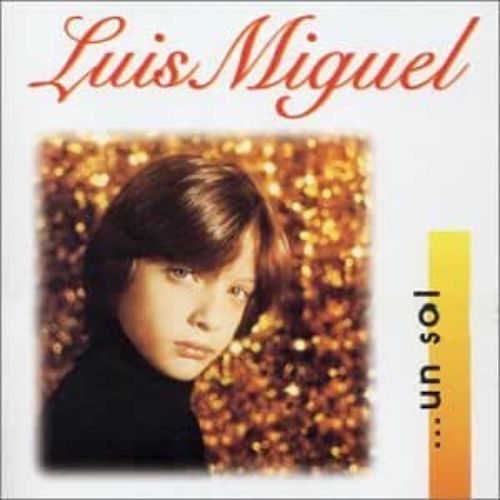
Track
- 1 + 1 = 2
- Amor De Escuela
- Tomemos Los Patines (Prendiamo I Pattini)
- Hay Un Algo
- Lo Que Me Gusta
- Balada Para Mi Abuela
- Mentira
- El Tiempo
- Adolescente Soñador
Un Sol (stylized as …Un Sol), also known as 1 + 1 = 2 Enamorados, marked the remarkable debut of Mexican singer Luis Miguel in 1982, at the tender age of eleven. This studio album swiftly ascended to the second position on California’s ‘Hot Latin LPs’ chart. Its influence reached beyond borders, with four of its tracks adapted into Portuguese and released as singles in Brazil, where they achieved notable success, including a gold certification for ‘1 + 1 = Dois Apaixonados.’ In Mexico, the album garnered widespread acclaim, selling approximately 700,000 copies, earning both gold and platinum certifications, while in Argentina, it moved over 10,000 units.
2. Directo al corazón (1982)
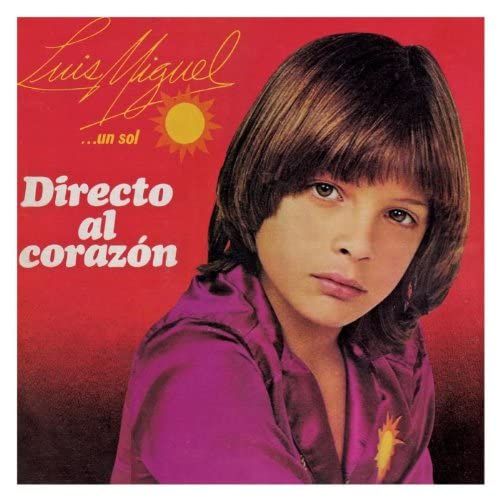
Track
- Directo Al Corazón
- Recuerdos Encadenados
- Lo Lei En Tu Diario
- A Mis Años Ya Te Amo
- Nosotros Dos
- Rock de La Niña Cruel
- Marcela
- Si Ves A Mi Chica, Dile Que La Amo
- No Es Permitido
- La Juventud
Released in 1982, ‘Directo al corazón’ marked the second album in the discography of Mexican sensation Luis Miguel. This record found resounding success, selling approximately 900,000 copies in his native Mexico. Notably, it also struck a chord with Argentine audiences, achieving gold certification after selling 115,000 copies in the country. With its blend of captivating melodies and Luis Miguel’s signature vocal prowess, ‘Directo al corazón’ solidified his rising star status, foreshadowing the remarkable career that would follow.
3. Decídete (1983)

Track
- Decídete
- Lupe
- No Me Puedes Dejar Así
- Safari
- Bandido Cupido
- Campeón
- El Brujo (Yummy, Yummy, Yummy)
- En Japón
- Soy Como Soy
- Mini Amor
“Decídete,” the third album by Mexican singer Luis Miguel Gallego Basteri, debuted in 1983. This release comes with an intriguing twist, as it features two distinct versions of the titular song. The initial rendition, characterized by suggestive lyrics recounting a teenage couple’s intimate encounter, was eventually replaced due to its explicit nature. The revised version, in contrast, conveys a more tender narrative, focusing on teenage romance. This album showcases Luis Miguel’s versatility and willingness to adapt his music to suit different audiences, reflecting his early experimentation with themes and lyrics in his burgeoning music career.
4. Palabra de Honor (1984)
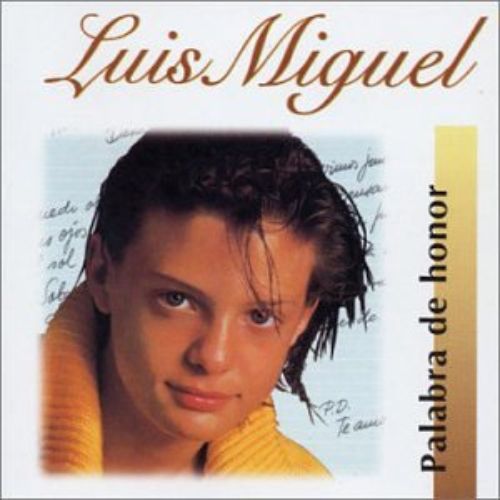
Track
- Tú No Tienes Corazón
- Un Rock & Roll Sonó
- La Chica Del Bikini Azul
- Lili
- Palabra de Honor
- Rey de Corazones
- Me Muero Por Ti
- Isabel
- Me Gustas Tal Como Eres
- Muñeca Rota
- Háblame
“Palabra de Honor” (“Word of Honour”) stands as the fourth studio album by renowned Mexican artist Luis Miguel, released on November 9, 1984, under EMI Records. This album enjoyed substantial promotion in Mexico and featured the hit single “Isabel,” earning a spot on VH1’s Top 100 Greatest Songs of the 80s in Spanish. Notably, it boasted a duet with Scottish singer Sheena Easton, “Me Gustas Tal Como Eres,” which won a Grammy Award for Best Mexican-American Performance. “Palabra de Honor” achieved No. 9 on California’s Billboard Top Latin Albums and garnered gold certification in Mexico and platinum status in Argentina. A Portuguese adaptation, “Meu Sonho Perdido,” also exists, showcasing the album’s enduring appeal across cultures.
5. Fiebre De Amor (1985)

Track
- Fiebre de Amor
- Acapulco Amor
- Sin ti, por tí
- Todo El Amor Del Mundo (Duet w/Lucerito)
- Este Amor
- Los Muchachos de Hoy (Italian Version)
- Fiebre de Amor (Instrumental)
- Siempre Me Quedo, Siempre Me Voy
- Sueños
- Siempre Te Seguiré (Only Lucerito)
- Los Muchachos de Hoy
“Fiebre de Amor” is the soundtrack album for the eponymous Mexican film, released in 1985 on the EMI Capitol label. The majority of the tracks are sung by Luis Miguel, with occasional appearances by Lucerito, his on-screen girlfriend. Notably, this soundtrack also features an Italian version. This musical compilation serves as a captivating backdrop to the romantic film, showcasing the talent of Luis Miguel and adding a multi-lingual dimension to the soundtrack’s appeal, offering a memorable experience for fans of both the movie and the artist.
6. Soy como quiero ser (1987)
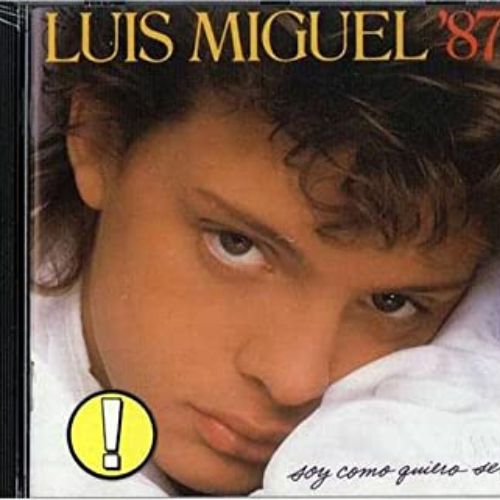
Track
- Es Mejor (Reach Out I’ll Be There)
- Sin Hablar (Duet with Laura Branigan)
- Ahora Te Puedes Marchar (I Only Want to Be With You)
- Yo Que No Vivo Sin Tí (You Don’t Have to Say You Love Me)
- Eres Tú
- Sólo Tú (Only You)
- No Me Puedo Escapar de Tí (Duet with Rocío Banquells)
- Cuando Calienta el Sol (Love Me with All Your Heart)
- Soy Como Quiero Ser
- Perdóname (All by Myself)
- Sunny
“Soy Como Quiero Ser,” released on July 15, 1987, marks Luis Miguel’s fifth studio album and his debut under WEA Latina. Subtitled “Luis Miguel ’87: Soy Como Quiero Ser,” the album features guest vocals by Laura Branigan and Rocío Banquells on select tracks. It primarily comprises Spanish adaptations of popular songs spanning the 1960s to the 1980s. Notably, the album earned a Grammy Award nomination for Best Latin Pop Album in the 30th Annual Grammy Awards in 1988, though the honor ultimately went to Julio Iglesias for “Un Hombre Solo.” This album is a pivotal chapter in Luis Miguel’s musical journey.
7. Busca Una Mujer (1988)
Track
- Fría Como el Viento
- Esa Niña
- Culpable o No (Miénteme Como Siempre)
- Un Hombre Busca a Una Mujer
- La Incondicional
- Separados
- Por Favor Señora
- Pupilas de Gato
- El Primero
- Soy Un Perdedor
“Busca una Mujer,” also known as “Un Hombre Busca una Mujer,” stands as the sixth studio album by renowned Mexican singer Luis Miguel. Released on November 25, 1988, under Warner Music, it was primarily crafted by Juan Carlos Calderón. The album’s lead single, “Fría Como el Viento,” enjoyed an impressive seven-month run in the top-ten of Latin American record charts. While the success of “Fría Como el Viento” shone brightly, it shouldn’t overshadow the other singles like “Separados,” “La Incondicional,” “Culpable o No (Miénteme Como Siempre),” “Esa Niña,” and “El Primero.”
The album’s title, “Busca una Mujer,” directly relates to Luis Miguel’s name, creating a poignant connection. Notably, “La Incondicional” ranked at number three on the Billboard Hot Latin Songs Year-End Chart in 1989, and “Separados” gained recognition as the entrance theme for Japanese wrestler Último Dragón in professional wrestling circles.
8. 20 Años (1990)
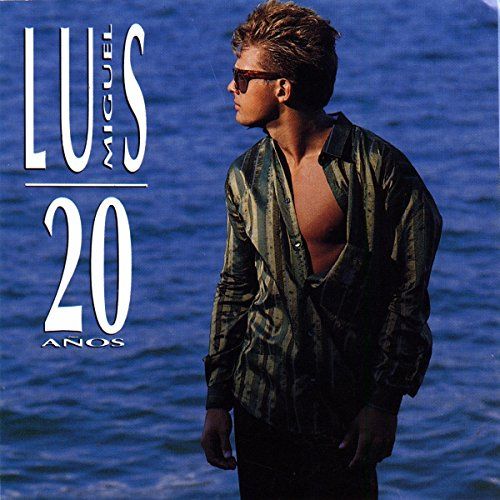
Track
- Entrégate
- Oro de Ley
- Tengo Todo Excepto a Ti
- Será que no me Amas (Blame It on the Boogie)
- Amante del Amor
- Hoy el Aire Huele a Ti
- Cuestión de Piel
- Más Allá de Todo
- Alguien Como Tú (Somebody In Your Life)
- Más
“20 años,” the seventh studio album by Mexican sensation Luis Miguel, graced the music scene on May 18, 1990, under the skilled production of Spanish artist Juan Carlos Calderón. This masterpiece transcended borders, resonating with Latin-America, Spain, and Hispanic audiences in the United States. While many tracks from the album enjoyed radio airplay, standout singles included “Tengo Todo Excepto A Tí,” “Entrégate,” “Amante del Amor,” “Hoy el aire huele a ti,” “Más allá de todo,” and “Será que no me amas.”
Its immense success led to Grammy and Lo Nuestro Award nominations, and it shattered records in Mexico, selling a staggering 600,000 copies during its release weekend. The album remains a timeless classic, with tracks like “Será que no me amas” even inspiring a popular Latin American choreography.
9. Romance (1991)
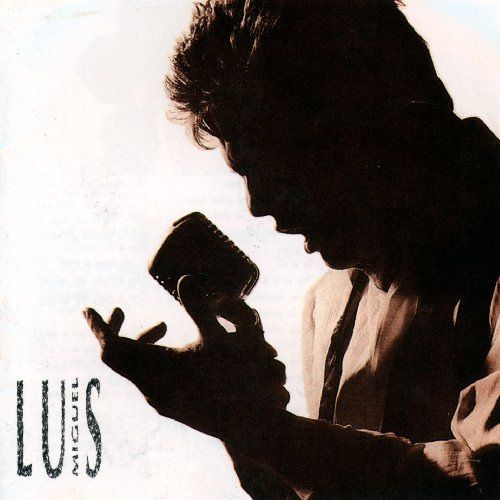
Track
- No Me Platiques Más (Don’t Say Any More)
- Inolvidable (Unforgettable)
- La Puerta (The Door)
- La Barca (The Boat)
- Te Extraño (I Miss You)
- Usted (You)
- Contigo en la Distancia (With You in the Distance)
- Mucho Corazón (A Lot of Heart)
- La Mentira (The Lie)
- Cuando Vuelva a Tu Lado (When I Return to Your Side)
- No Sé Tú (I Don’t Know About You)
- Cómo (How)
“Romance,” the eighth studio album by Mexican singer Luis Miguel, was released on November 19, 1991, under WEA Latina. Originally intended as a collaboration with Juan Carlos Calderón, it shifted towards bolero music due to creative constraints. Co-produced by Mexican singer-songwriter Armando Manzanero, the album comprises twelve boleros recorded from 1944 to 1986. Singles like “Inolvidable” and “No Sé Tú” topped the Billboard Hot Latin Songs chart and Mexican charts. “Mucho Corazón” and “Cómo” also gained popularity.
The album received critical acclaim and a Grammy nomination. It sold over eight million copies worldwide, making it Luis Miguel’s best-selling record and reviving interest in bolero music.
10. Aries (1993)

Track
- Suave
- Me Niego a Estar Solo
- Luz Verde
- Hasta el Fin
- Ayer
- Que Nivel de Mujer
- Pensar en Ti
- Dame Tu Amor
- Hasta Que Me Olvides
- Tú y Yo
“Aries,” the ninth studio album by Mexican artist Luis Miguel, was released on June 22, 1993, by WEA Latina. Following the commercial triumph of his previous album, “Romance,” Luis Miguel returned to a style reminiscent of his earlier work, blending pop ballads and dance tracks infused with R&B influences. Produced by Luis Miguel himself, with assistance from Kiko Cibrian, Rudy Pérez, David Foster, and Juan Luis Guerra, the album yielded three hit singles: “Ayer” and “Hasta Que Me Olvides” claimed the top spots on the US Billboard Hot Latin Songs chart, while “Suave” reached number nine.
“Aries” topped the US Billboard Latin Pop Albums chart for 19 weeks and earned triple platinum status in Mexico, diamond certification in Argentina, and global sales of over three million copies. Despite mixed critical reviews, Luis Miguel’s vocals and the album’s arrangements earned praise, and it ultimately won the Grammy Award for Best Latin Pop Album.
11. Segundo Romance (1994)

Track
- El Día Que Me Quieras
- Sin Ti
- Somos Novios
- La Media Vuelta
- Solamente una Vez
- Todo y Nada
- Historia de un Amor
- Cómo Yo Te Amé
- Nosotros
- Yo Sé Que Volverás
- Delirio
“Segundo Romance,” the tenth studio album by Mexican singer Luis Miguel, unveiled on August 30, 1994, via WEA Latina, is a captivating musical journey. Similar to his 1991 album “Romance,” it features cover versions of boleros spanning from 1934 to 1993. Produced by Miguel in collaboration with Juan Carlos Calderón, Kiko Cibrian, and Armando Manzanero, the album was recorded in early 1994 at the Record Plant in Los Angeles. Luis Miguel supported the album with a tour in the United States and Latin America. It spawned hit singles like “El Día Que Me Quieras” and “La Media Vuelta,” both topping the Billboard Hot Latin Songs chart.
The album earned critical acclaim, including a Grammy Award for Best Latin Pop Performance, and achieved multi-platinum status in various countries, renewing mainstream interest in bolero music, just like its predecessor.
12. Nada Es Igual (1996)

Track
- Si Te Vas
- Abrázame
- Dame
- Nada es Igual
- Todo Por Su Amor
- Que Tú Te Vas
- Sintiéndote Lejos
- Cómo Es Posible Que a Mi Lado
- Un Día Mas
- Sueña
Nada Es Igual (English: Nothing Is the Same) is the eleventh studio album by Mexican artist Luis Miguel, released on 20 August 1996 by WEA Latina. With a musical style akin to his prior pop album, Aries (1993), the album features power ballads and R&B tunes. Recorded at the Record Plant Studios in February 1996, Luis Miguel co-produced it with Kiko Cibrian. Songwriting assistance came from Cibrian, Rudy Pérez, and Alejandro Lerner.
The album produced hit singles like “Dame,” “Cómo Es Posible Que a Mi Lado,” and “Que Tú Te Vas.” Despite mixed critical reception, it topped charts in Argentina and the Billboard Top Latin Albums in the U.S., earning multi-platinum and gold certifications, and selling over 3 million copies worldwide.
13. Romances (1997)

Track
- Voy a Apagar la Luz / Contigo Aprendí
- Sabor a Mí
- Por Debajo de la Mesa
- La Gloria Eres Tú
- Amanecer
- Encadenados
- Bésame Mucho
- Contigo (Estar Contigo)
- Noche de Ronda
- El Reloj
- Júrame
- De Quererte Así (De T’Avoir Aimee)
- Uno
- Mañana de Carnaval (Manhã de Carnaval)
“Romances,” the twelfth studio album by Mexican singer Luis Miguel, released on August 12, 1997, showcases his enchanting interpretations of Latin classics spanning 1940 to 1978. Produced with the collaboration of arranger Bebu Silvetti and directed by Armando Manzanero, it features twelve cover versions and two original tracks. Recorded at the Ocean Way studio in Los Angeles in early 1997, the album has sold over 4.5 million copies, earning platinum certifications across Latin America, the United States, and Spain.
Luis Miguel toured extensively to promote it, receiving critical acclaim for his vocals and production, though some found the arrangements repetitive. The album earned him a Grammy Award for Best Latin Pop Performance in the United States and spawned six hit singles.
14. Amarte Es Un Placer (1999)

Track
- Tu Mirada
- Soy Yo
- Sol, Arena y Mar
- O Tú o Ninguna
- Quiero
- Dormir Contigo
- Dímelo en un Beso
- No Me Fío
- Te Propongo Esta Noche
- Tú, Sólo Tú
- Ese Momento
- Amarte Es un Placer
“Amarte Es un Placer,” the thirteenth studio album by Mexican sensation Luis Miguel, emerged on the music scene on September 13, 1999, under the WEA Latina label. This pop masterpiece carries hints of R&B and jazz influences, showcasing Miguel’s musical evolution. Unlike contemporaries Ricky Martin and Enrique Iglesias who ventured into the English-language market, Miguel remained steadfast in his commitment to Spanish. The album spawned hit singles like “Sol, Arena y Mar,” “O Tú o Ninguna,” “Dormir Contigo,” and the titular track, “Amarte Es un Placer.”
His subsequent world tour, lasting from September 1999 to May 2000, shattered records as the highest-grossing tour by a Spanish-speaking artist. Certified gold in the U.S. and multi-platinum in multiple countries, it’s no surprise that this album has sold 3.5 million copies worldwide. Despite mixed reviews from critics, Miguel’s vocal prowess and this album’s compositions earned him accolades, including Latin Grammy Awards for Album of the Year and Best Pop Vocal Album.
15. Mis Romances (2001)

Track
- ¿Qué Sabes Tú?
- Tú Me Acostumbraste
- Perfidia
- Amor, Amor, Amor
- Cómo Duele
- Toda una Vida
- El Tiempo Que Te Quede Libre
- Amorcito Corazón
- La Última Noche
- Volver
- Al Que Me Siga
“Mis Romances,” the fourteenth studio album by Mexican singer Luis Miguel, graced the music scene on November 20, 2001, courtesy of Warner Music Latina. A notable addition to the Romance series, the album sees Luis Miguel’s velvety voice crooning bolero classics from Latin America, sprinkled with two original compositions. Produced by the artist himself, the album was recorded in Los Angeles, California, featuring the Royal Philharmonic Orchestra at London’s Abbey Road Studios.
This musical endeavor was promoted by three singles and a 2002 tour spanning the United States, Latin America, and Spain, reigning as the highest-grossing tour by a Latin artist in the U.S. Despite mixed reviews, it achieved commercial success, reaching the pinnacle in Argentina, dominating Mexican charts, and earning awards, including the Billboard Latin Music Award for “Latin Pop Album of the Year by a Male Artist.”
16. 33 (2003)

Track
- Un Te Amo
- Con Tus Besos
- Devuélveme El Amor
- Te Necesito
- Nos Hizo Falta Tiempo
- Eres
- Ahora Que Te Vas
- Qué Tristeza
- Y Sigo
- Vuelve
- Qué Hacer
“33” is the 2003 album by Mexican singer Luis Miguel. It marked his return to the pop genre after a series of successful bolero albums. This production contains a blend of romantic ballads and upbeat tracks, showcasing Miguel’s vocal versatility. Notably, it features collaborations with artists like Juan Luis Guerra and Aleks Syntek. “33” was a commercial success, topping the Billboard Latin Pop Albums chart and receiving several awards, including a Grammy nomination. With its diverse musical styles and Miguel’s powerful vocals, “33” solidified his position as a dominant force in the Latin music industry and remains a notable entry in his extensive discography.
17. México En La Piel (2004)

Track
- El Viajero
- Entrega Total
- Échame a Mí la Culpa
- México en la Piel
- Cruz de Olvido
- De Qué Manera Te Olvido
- Luz de Luna
- Motivos
- Cielo Rojo
- Paloma Querida
- Que Seas Feliz
- Un Mundo Raro
- Sabes una Cosa
“México en la Piel” is the sixteenth studio album by renowned Mexican singer Luis Miguel, released on November 9, 2004, by Warner Music Latina. Notably, it marked his debut into the mariachi genre, featuring thirteen mariachi covers performed alongside the Vargas de Tecalitlán folk ensemble. With Armando Manzanero as musical director and Miguel as producer, the album was recorded at Ocean Way Recording in Hollywood, California, in July 2004. A special edition, “México en la Piel: Edición Diamante,” followed in September 2005.
Despite mixed critical reception, it earned Grammy and Latin Grammy Awards, topped charts worldwide, including the Billboard Top Latin Albums, and achieved over two million copies in sales. Additionally, Luis Miguel’s accompanying tour set a record as the highest-grossing by a Latin artist, amassing over $90 million.
18. Navidades (2006)
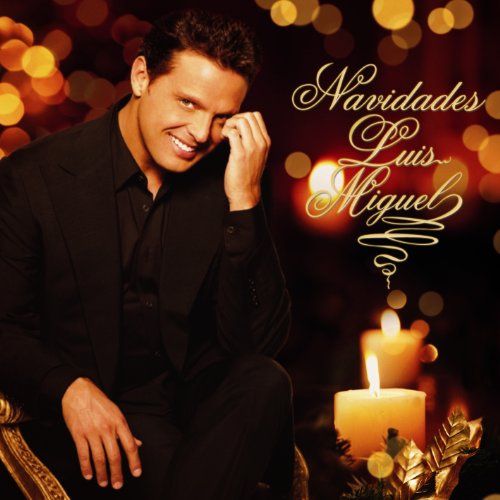
Track
- Santa Claus Llegó a la Ciudad (Santa Claus Is Coming to Town)
- Te Deseo Muy Felices Fiestas (Have Yourself a Merry Little Christmas)
- Frente a la Chimenea (Rudolph the Red-Nosed Reindeer)
- Blanca Navidad (White Christmas)
- Navidad, Navidad (Jingle Bells)
- Estaré en Mi Casa Esta Navidad (I’ll Be Home for Christmas)
- Mi Humilde Oración (Grown-Up Christmas List)
- Va a Nevar (Let It Snow)
- Sonríe (Smile)
- Llegó la Navidad (Winter Wonderland)
- Noche de Paz (Silent Night)
“Navidades,” the 17th studio album by Mexican sensation Luis Miguel, was released by Warner Music Latina on November 14, 2006, marking his first foray into the realm of Christmas music. This festive collection features Spanish adaptations of English-language classics, blending big band numbers with lush ballads. Collaborating with Édgar Cortázar and Juan Carlos Calderón, Luis Miguel produced an album that showcased his versatile vocals. Notably, “Mi Humilde Oración” (“Grown-Up Christmas List”) and “Santa Claus Llegó a la Ciudad” (“Santa Claus Is Comin’ to Town”) served as lead singles. While opinions among music critics were mixed, Navidades climbed to the top spot in Mexico and the Billboard Top Latin Albums chart in the United States.
It also achieved top-ten status in Argentina and Spain and became the first Spanish-language holiday album to rank on the Billboard Top Holiday Albums since 1966. By November 2015, it had sold over 1.1 million copies, cementing its place as a holiday classic.
19. Cómplices (2008)

Track
- Te Desean
- Dicen
- Ay, Cariño
- De Nuevo el Paraíso
- Si Tú Te Atreves
- Amor a Mares
- Estrenando Amor
- Bravo Amor Bravo
- Tu Imaginación
- Cómplices
- Amor de Hecho
- Se Amaban
“Cómplices,” the 18th studio album by Mexican singer Luis Miguel, was released on May 2, 2008, through Warner Music Latina. This collaborative effort with Spanish musician Manuel Alejandro, who handled songwriting and arrangements, delivered a pop album dominated by ballads and a sprinkling of uptempo tracks, celebrating themes of romance. The singles “Si Tú Te Atreves” and “Te Desean” were released to promote the album, and Luis Miguel embarked on a year-long Cómplices Tour across North America and parts of South America.
While the album received mixed reviews for its similarity to previous works, it soared commercially, reaching number one in various countries and earning Grammy and Latin Billboard Music Awards nominations. To date, it has sold over 1.2 million copies.
20. Luis Miguel (2010)

Track
- Labios de Miel
- Mujer de Fuego
- Tres Palabras
- Ella Es Así
- No Existen Límites
- Siento
- Lo Que Queda de Mí
- Es Por Ti
- De Quién Es Usted
- Tal Vez Me Mientes
“Luis Miguel,” the nineteenth studio album by Mexican pop sensation Luis Miguel, made its global debut on September 14, 2010, commemorating the artist’s remarkable three-decade journey in the music industry. This milestone release serves as a testament to Luis Miguel’s enduring influence and artistic evolution. The album showcases his signature vocal prowess and diverse musical range, reaffirming his status as a legendary figure in Latin music. A celebration of unparalleled success, “Luis Miguel” stands as a testament to the enduring appeal and enduring artistry of the beloved singer, marking a significant chapter in his illustrious career.
21. ¡México Por Siempre! (2017)
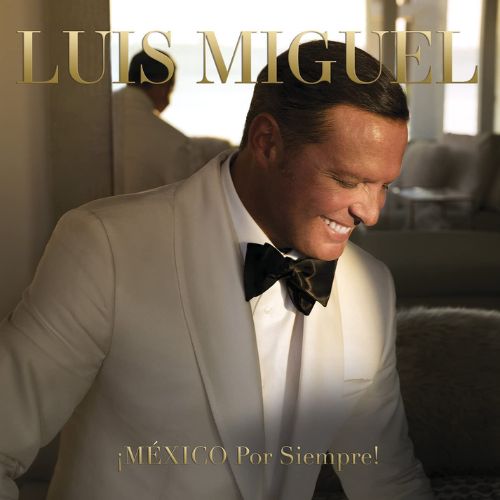
Track
- La Fiesta del Mariachi
- No Me Amenaces
- Llamarada
- El Balajú / Huapango
- Soy Lo Prohibido
- El Siete Mares
- ¿Por Qué Te Conocí?
- Deja Que Salga la Luna
- Serenata Huasteca
- Que Te Vaya Bonito
- No Discutamos
- Sin Sangre en las Venas
- Que Bonita Es Mi Tierra
- Los Días Felices (Les jours heureux)
¡México Por Siempre! (“Forever Mexico”), stylized as ¡MÉXICO Por Siempre!, marked a significant milestone in the illustrious career of Mexican singer Luis Miguel. Released on November 24, 2017, through Warner Music Mexico, this was his 20th studio album and a return to his mariachi roots, following the success of México en la Piel in 2006. Produced solely by Miguel, the album showcased the musical prowess of the mariachi ensemble Vargas de Tecalitlán.
The album received immense commercial acclaim, achieving triple platinum certification from AMPROFON and securing top ten positions on music charts in Mexico, Argentina, and Spain. Additionally, it earned critical acclaim, winning two Latin Grammy Awards for Album of the Year and Best Ranchero/Mariachi Album, as well as the Grammy Award for Best Regional Mexican Music Album.
Thanks for visit!






